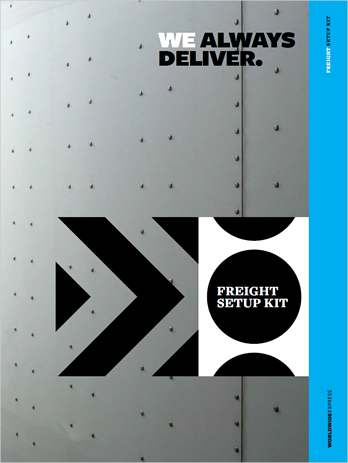Helpful Hints for Your Freight Shipping
Managing all your freight shipments is no small task. That's where WE come in. Below you will find helpful tips and tricks to help you with your SpeedShip setup, freight shipping options and more.
Accessing and Using SpeedShip®
Worldwide Express' proprietary, web-based software, SpeedShip, offers you the flexibility to create shipments any time, from anywhere. Tailored to your specific business needs, it allows you to easily pre-populate frequently used data, making it quicker and easier to get your freight out the door. We can even transfer your address book from your current shipping platform to get you up and running on SpeedShip in no time flat.
New User Setup
Your Worldwide Express Account Executive will set up your account and provide you with an administrative login that gives you the power to oversee your business.
Need to add a user?
- Log in to SpeedShip
- Navigate to Manage My Data
- Select User Logins
- Create new users by following the prompts. You can set preferences for each user to ensure that employees have access to the information or functions specific to their roles or responsibilities.
Forget your login information? Contact your Worldwide Express Account Executive or Account Manager for assistance accessing your account.
Start shipping today with our SpeedShip quick start guide
Knowing and Calculating Your Freight Class
Our mission is to ensure you receive the most accurate pricing available for your LTL freight shipments. So you can quote and ship without surprises, we help you understand how carriers arrive at pricing and ensure that you have the information necessary to class your freight.
Knowing Your Freight Class
When selecting your class, it's important to know if your item is a density-based commodity. Density is just one factor that influences freight classification – by choosing the right one ahead of time, you can easily determine if your cargo may be subject to a reclass and potential unexpected charges on your freight invoice. For density-based commodities, using the density calculation can help you determine the right class.
Freight Class Reference Chart
| Density (in lbs. per cubic foot) | Class |
| Less than 1 | 400 |
| 1 but less than 2 | 300 |
| 2 but less than 4 | 250 |
| 4 but less than 6 | 175 |
| 6 but less than 8 | 125 |
| 8 but less than 10 | 100 |
| 10 but less than 12 | 92.5 |
| 12 but less than 15 | 85 |
| 15 but less than 22.5 | 70 |
| 22.5 but less than 30 | 65 |
| Over 30 | 60 |
Plus, check out this quick guide to explain in clear terms what an NMFC code is, break down the factors that affect your class, and give you helpful hints on the ways to determine your shipment's class.
Accessorial Fees & Services
Because carriers base their rates on their available capacity and the efficiency of routes, it's important you provide information about any additional services at the time of quoting. By doing so, you ensure that a truck arrives ready and equipped to move your specific freight. It also helps you avoid any surprise charges when you're billed for your shipment. When you're unsure of the services needed, reach out to the shipment origin and destination prior to quoting to confirm what special considerations they will need for pickup or delivery. This list includes some of the most common accessorial services you can select on SpeedShip.
See which carriers service particular regions and get a better understanding of your options.
